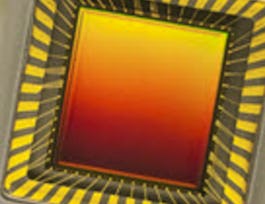In this course, you will learn relevant fundamentals of human motor performance, perception, and cognition that inform effective interaction design. You will use these models of how people work to design more effective input and interaction techniques. You’ll apply these to both traditional graphic and gestural interfaces.



Input and Interaction
This course is part of Interaction Design Specialization

Instructor: Scott Klemmer
Sponsored by Louisiana Workforce Commission
22,214 already enrolled
(711 reviews)
Skills you'll gain
Details to know

Add to your LinkedIn profile
2 assignments
See how employees at top companies are mastering in-demand skills

Build your subject-matter expertise
- Learn new concepts from industry experts
- Gain a foundational understanding of a subject or tool
- Develop job-relevant skills with hands-on projects
- Earn a shareable career certificate


Earn a career certificate
Add this credential to your LinkedIn profile, resume, or CV
Share it on social media and in your performance review

There are 3 modules in this course
There’s more to interfaces than what’s on the screen. While often overlooked, input deserves to be on equal footing with its more popular sibling, output. Also, input is a rare case where we can model user behavior mathematically. In this module, you’ll learn how good input is more than just preference, trace input from the fingertip to the screen, and think about the diversity of possible input devices and their relative merits.
What's included
4 videos1 reading1 assignment
We live in an information-rich world. Consequently, the hardest part of interaction is often finding what we want or finding something that we didn’t know what to ask for. From e-commerce to digital libraries, good search design is central to human-computer interaction in the 21st century.
What's included
3 videos1 reading1 peer review
The graphical user interface with windows, icons, menus, and pointers (WIMP) was a massive advance beyond the command line. It also took 20 years to go from research labs into people’s homes. We’re in the midst of a new sea change now. Gestural interfaces can be even more direct and more natural. They can also be even more frustrating. In this module, you’ll learn how to tell the difference and design gestural interfaces that work.
What's included
3 videos1 reading1 assignment1 peer review
Instructor

Offered by
Why people choose Coursera for their career




Learner reviews
711 reviews
- 5 stars
69.33%
- 4 stars
22.92%
- 3 stars
5.90%
- 2 stars
1.12%
- 1 star
0.70%
Showing 3 of 711
Reviewed on Feb 17, 2016
This is a great course, the final questions had me a bit confused BUT if you read carefully (not dyslexically like me) no problem.
Reviewed on Nov 13, 2019
I love the theory and exercises as well! This information was very useful for me working at UX/UI Senior position. And Im looking forward to start use it in my daily work!
Reviewed on Jul 5, 2017
Interview with Don Norman was very interesting and really learnt new thing about the Gesture Principle.
Recommended if you're interested in Computer Science

Coursera Project Network

Coursera Project Network

University of California, Irvine

Open new doors with Coursera Plus
Unlimited access to 10,000+ world-class courses, hands-on projects, and job-ready certificate programs - all included in your subscription
Advance your career with an online degree
Earn a degree from world-class universities - 100% online
Join over 3,400 global companies that choose Coursera for Business
Upskill your employees to excel in the digital economy



